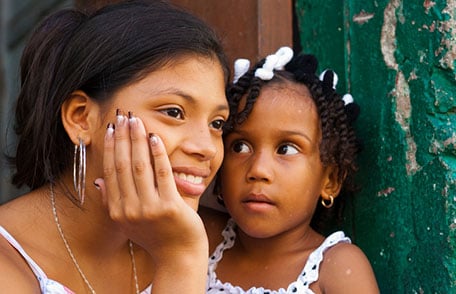Preventing Violence Against Women and Girls

November 25th is the International Day for the Elimination of Violence against Women and Girls.
More than one billion children—half of all the children in the world—are victims of violence every year. And in many countries, one in three girls experience sexual violence before the age of 18. All children deserve to grow up in a safe, stable, nurturing environment with healthy relationships. This is why CDC is proud to be part of the Together for Girls partnership leading the Violence Against Children Survey s (VACS).
Understanding Violence with VACS
To prevent violence, we must first understand its magnitude, nature, and consequences. The VACS measures physical, emotional, and sexual violence against girls and boys aged 13–24 in countries around the world. Survey results provide reliable data, which allows countries to make better decisions about using their limited resources to develop, launch, and evaluate violence prevention programs and child protection systems.
As of November 2018, reports are available from surveys in 11 countries in Africa, Asia, and the Caribbean. The surveys have data covering 10 percent of the world’s youth population. Data collection, analysis, and report writing is underway in 13 more countries, which will shed even more light on the issue of violence against young girls, boys, men and women.
What CDC is Doing
CDC is the lead technical assistance partner in the Together for Girls partnership, providing input to country partners from study design to training interviewers, offering data, and facilitating action workshops with stakeholders.
The work we do through our partnerships produces tangible results that contribute toward realizing our vision of a global community free of violence. One example is the dissemination of INSPIRE: Seven Strategies for Ending Violence against Children, which identifies strategies that have shown success in reducing violence against children.
Violence underpins many public health problems, including greater risk of chronic disease, injury, and suicide. But there is a reason for hope: violence against women and children is not inevitable—it is preventable. We must prevent it by using the best available evidence to guide us as we invest in research and programs that educate, shift social norms, and empower vulnerable populations.
More Information
- International Day for the Elimination of Violence Against Women and Girls
- CDC’s Violence Against Children Surveys
- INSPIRE: Seven Strategies for Ending Violence Against Children
- INSPIRE Handbook: Action for Implementing the Seven Strategies for Ending Violence Against Children
- INSPIRE Infographic[266 KB]






















.png)











No hay comentarios:
Publicar un comentario